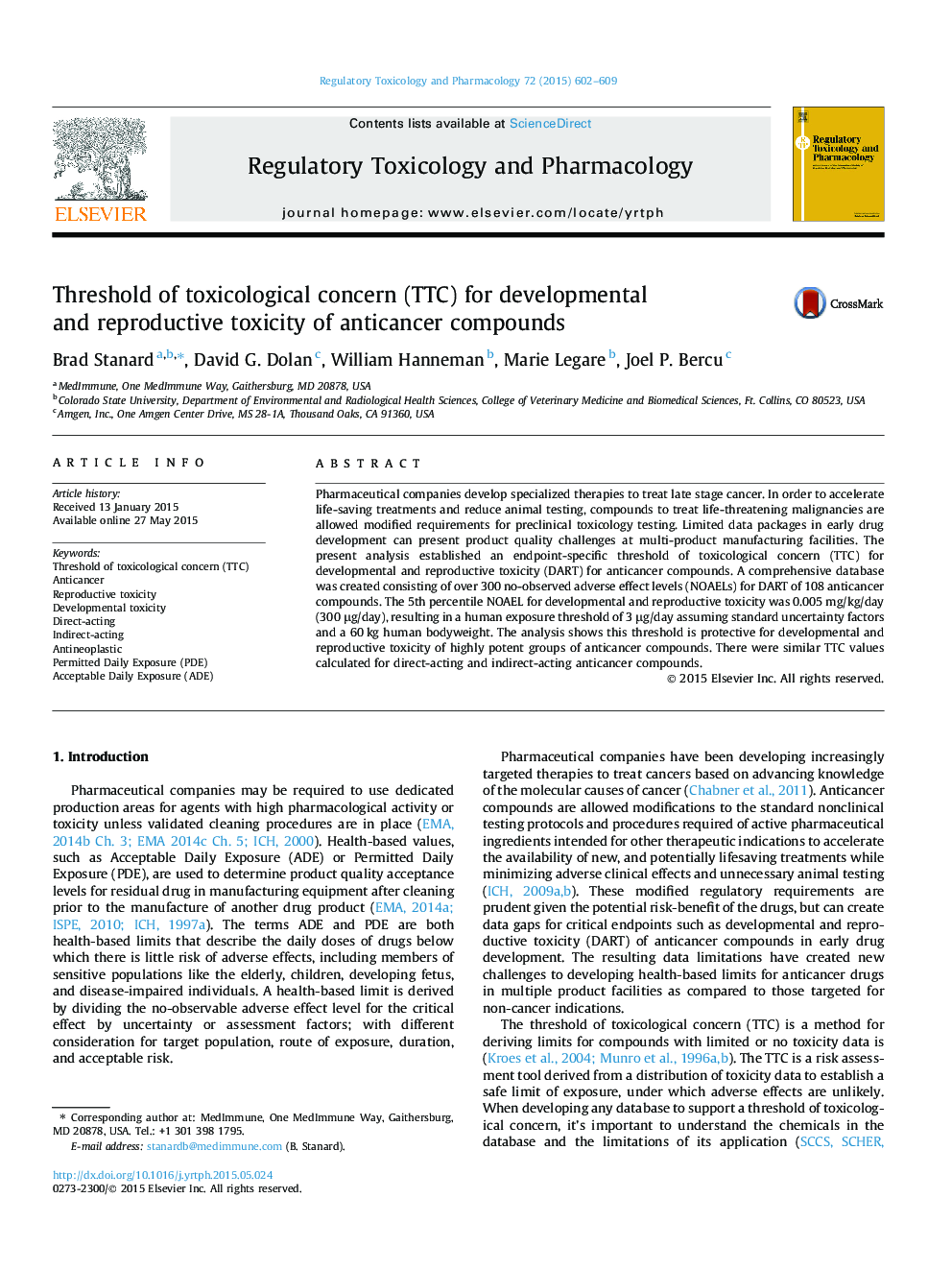| Article ID | Journal | Published Year | Pages | File Type |
|---|---|---|---|---|
| 5856590 | Regulatory Toxicology and Pharmacology | 2015 | 8 Pages |
Abstract
Pharmaceutical companies develop specialized therapies to treat late stage cancer. In order to accelerate life-saving treatments and reduce animal testing, compounds to treat life-threatening malignancies are allowed modified requirements for preclinical toxicology testing. Limited data packages in early drug development can present product quality challenges at multi-product manufacturing facilities. The present analysis established an endpoint-specific threshold of toxicological concern (TTC) for developmental and reproductive toxicity (DART) for anticancer compounds. A comprehensive database was created consisting of over 300 no-observed adverse effect levels (NOAELs) for DART of 108 anticancer compounds. The 5th percentile NOAEL for developmental and reproductive toxicity was 0.005 mg/kg/day (300 μg/day), resulting in a human exposure threshold of 3 μg/day assuming standard uncertainty factors and a 60 kg human bodyweight. The analysis shows this threshold is protective for developmental and reproductive toxicity of highly potent groups of anticancer compounds. There were similar TTC values calculated for direct-acting and indirect-acting anticancer compounds.
Keywords
Related Topics
Life Sciences
Environmental Science
Health, Toxicology and Mutagenesis
Authors
Brad Stanard, David G. Dolan, William Hanneman, Marie Legare, Joel P. Bercu,
